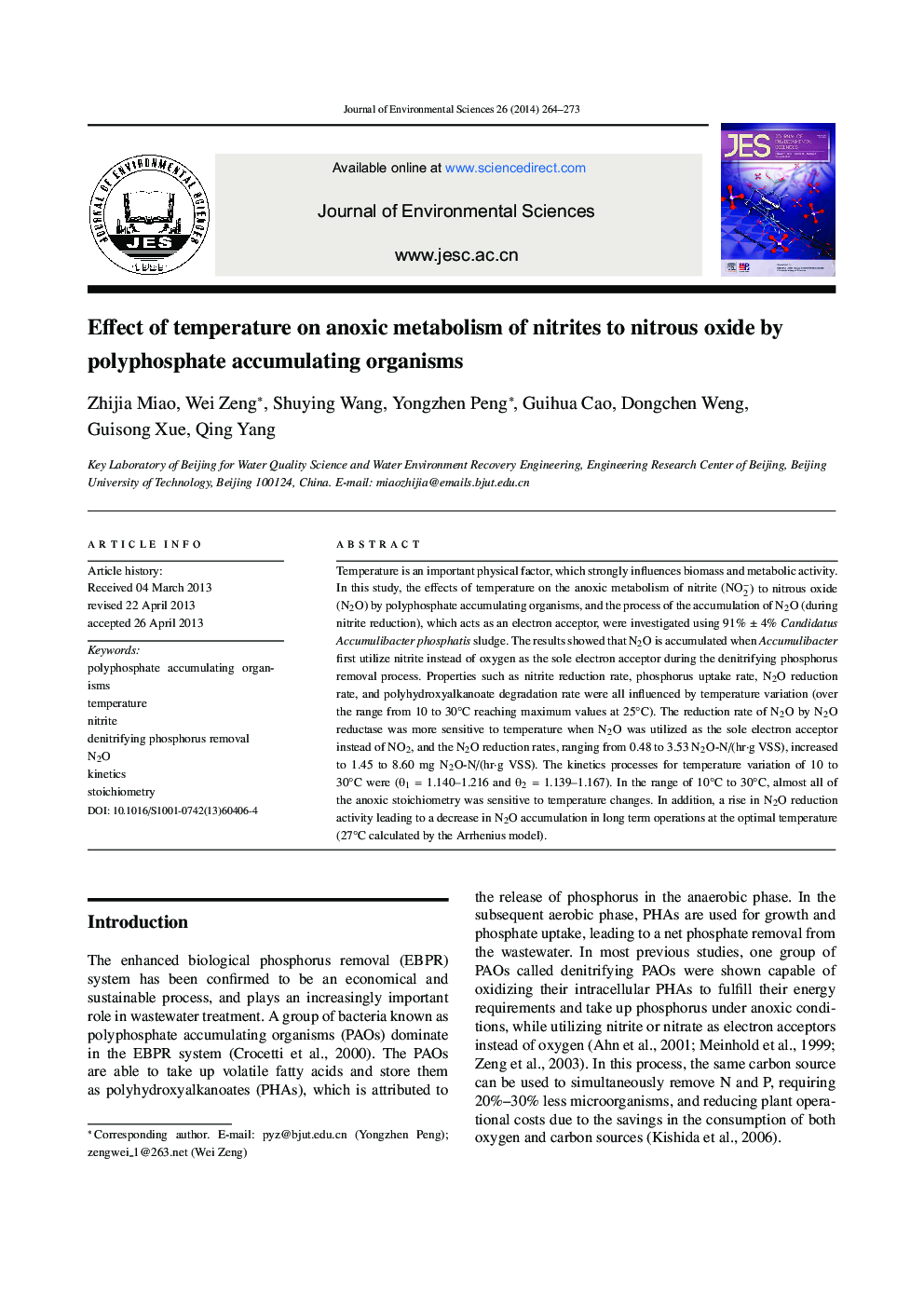| کد مقاله | کد نشریه | سال انتشار | مقاله انگلیسی | نسخه تمام متن |
|---|---|---|---|---|
| 4454644 | 1312489 | 2014 | 10 صفحه PDF | دانلود رایگان |
Temperature is an important physical factor, which strongly influences biomass and metabolic activity. In this study, the effects of temperature on the anoxic metabolism of nitrite (NO−2) to nitrous oxide (N2O) by polyphosphate accumulating organisms, and the process of the accumulation of N2O (during nitrite reduction), which acts as an electron acceptor, were investigated using 91% ± 4% Candidatus Accumulibacter phosphatis sludge. The results showed that N2O is accumulated when Accumulibacter first utilize nitrite instead of oxygen as the sole electron acceptor during the denitrifying phosphorus removal process. Properties such as nitrite reduction rate, phosphorus uptake rate, N2O reduction rate, and polyhydroxyalkanoate degradation rate were all influenced by temperature variation (over the range from 10 to 30°C reaching maximum values at 25°C). The reduction rate of N2O by N2O reductase was more sensitive to temperature when N2O was utilized as the sole electron acceptor instead of NO2, and the N2O reduction rates, ranging from 0.48 to 3.53 N2O-N/(hr·g VSS), increased to 1.45 to 8.60 mg N2O-N/(hr·g VSS). The kinetics processes for temperature variation of 10 to 30°C were (θ1 = 1.140–1.216 and θ2 = 1.139–1.167). In the range of 10°C to 30°C, almost all of the anoxic stoichiometry was sensitive to temperature changes. In addition, a rise in N2O reduction activity leading to a decrease in N2O accumulation in long term operations at the optimal temperature (27°C calculated by the Arrhenius model).
Journal: Journal of Environmental Sciences - Volume 26, Issue 2, 1 February 2014, Pages 264-273
